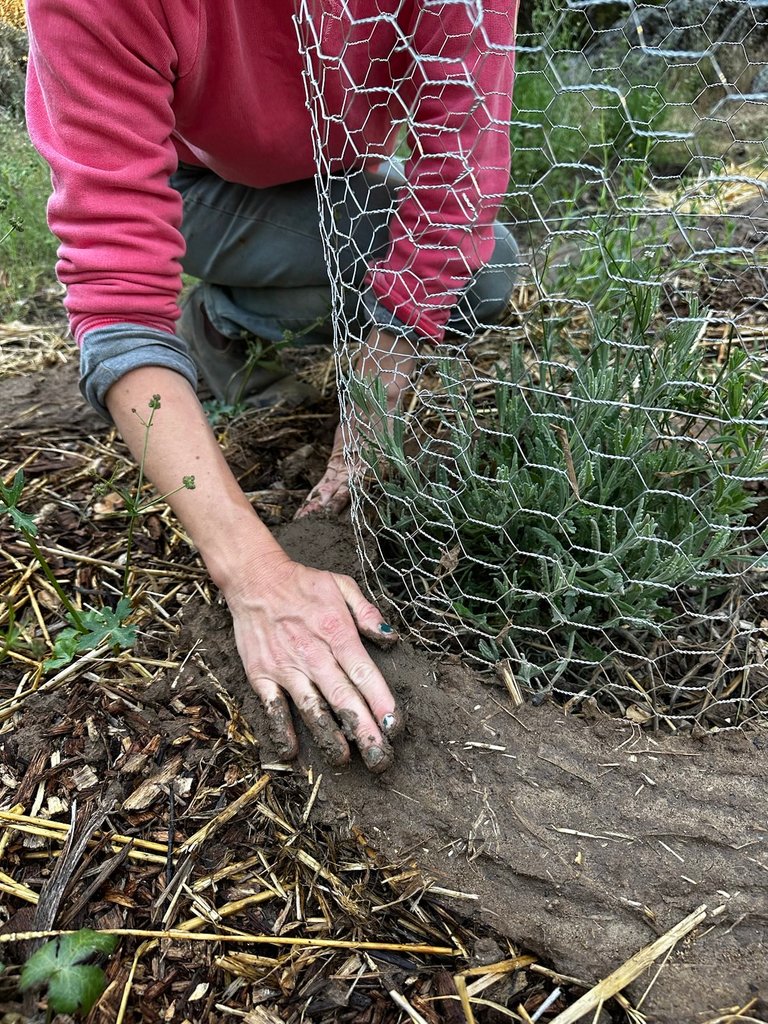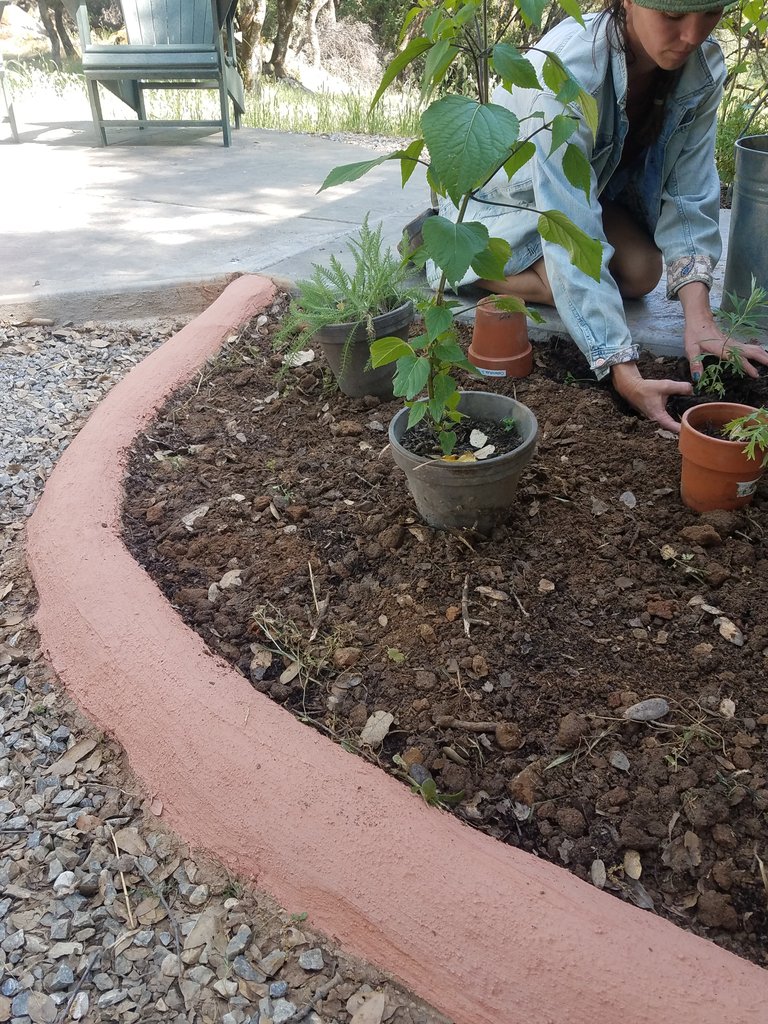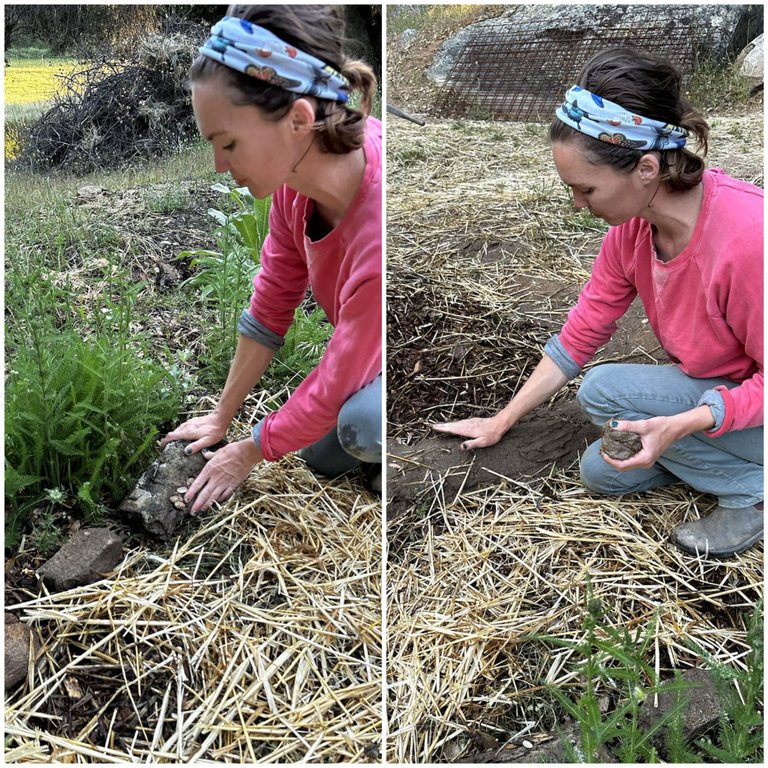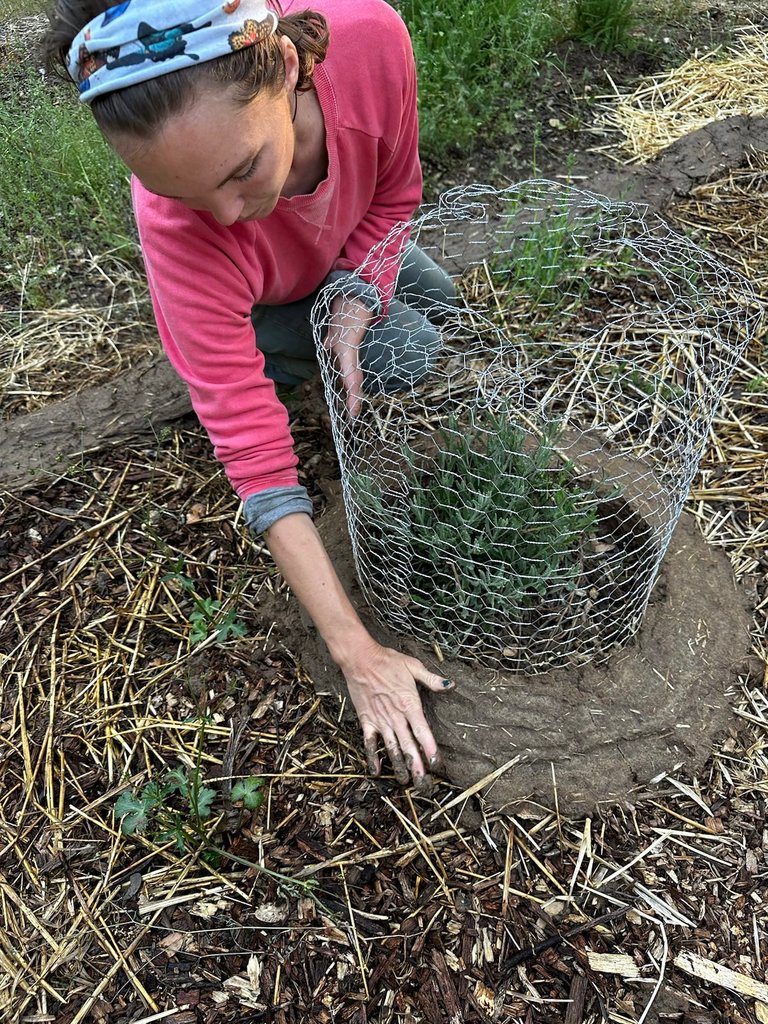Each garden location comes with its own challenges, from erosion to pests and beyond. In this little mountain garden our main challenge is protecting our herbs from the local herd of deer and to keep seasonal rains from eroding away our garden beds. After recently constructing outdoor furniture with a natural building technique called cob, I decided to try my hand at building garden walls and protective structures with cob as well.
You may have seen a recent post about a bench I built with cob, the article is here if you haven't seen it yet. In short Cob is a dough made of clay, sand, straw and water which can be shaped into almost any form.

Neither my mom or I live here full time and grow our vegetables in our personal gardens. Since we cannot dedicate time to the garden daily, we chose to focus on growing hardy, medicinal herbs. Much to our surprise the deer seemed to love eating even the most aromatic herbs like lavender and white sage. So, just before leaving for the next few months, I made sure that these more exposed herbs are protected from the most intense or grazing, while still having space to spread out and bloom.
Before heading out the the terraced garden, I used this technique to build borders to a couple of curved garden beds just outside our outdoor kitchen. Under neath is a layer of gravel over compacted soil, so the bed needed to be raised up with layers of compost and dirt, then retained with a small cob wall to prevent erosion.

Building with cob is much like molding clay or play-dough and just as forgiving. Cob dries slowly but does need a considerable amount of moisture in order to adhere to a new surface. I started by spraying down the whole area, especially the gravel area over which I would be building. Then I wheeled over the cart filled with freshly mixted cob and started to mold. As I said, cob is easy to shape and quite forgiving so I took my time to form nearly identical retaining arcs, because I love symmetry.

Next came painting. Now, this step isn't entirely necessary. In fact, in this dry California climate I often leave garden walls unpainted and simply add another layer of "cob paint" in a year or two. But, as these tiny garden walls are in a high traffic area and receive run-off from the kitchen roof, I felt that adding an extra layer of lime wash paint would be practical as well as beautiful!
On to the Terraced Garden
Over the past three years my Mom and I have been collaborating on a terraced garden and learning a lot along the way, most through trial and error. The garden has a terrific slope which means its catches a lot of sunshine and is out of view of the main road, which I really appreciate. But, being on a slope means we needed to control for erosion by terracing. Last year we build up a wall of rocks at the base of each terrace. With the accumulation of organic matter, through rain and through adding mulch, the garden beds themselves have grown and the terraced walls needed to grow with them. Instead of adding more rocks which are in short supply, I made a huge batch of cob and covered the rocks, raising up the entire terrace wall. I will likely do this again in a couple of years time and as the garden grows, so there is no real need to paint these cob structures with lime wash.

And lastly the plant cages!
Certain plants like mullein and yarrow were mostly left alone by the deer last year. But some of our favorites like echinacea, plantain leaf, white sage, and lavender were eaten to the ground and some haven't returned at all! California was going through and intense drought and wildfire season, so the deer aren't to blame for doing their best to survive.
After a super rainy winter, our multi-acre meadow is alive with green grass and flowers and I feel that we ought to give the remaining herbs a second chance at life. And thus I invented a new way to protect these much loved herbs with left over bits of wire and a base of cob to secure them in.

The idea here is that the base of the plant is protected from over grazing while the flowers will be able to grow outside the cage and be harvested easily. I intend to keep this cage on for just a few years after which the plant will be large enough to fend for itself. In these situations cob is perfect as it last many years, but can be pretty easily removed after an intense rainstorm or heavy watering. As the cob base doesn't have limewash paint, it will become flexible when deeply watered and will harden again when dried by the sun - making this the perfect building material for semi-permanent outdoor structures.
And that, my gardener friends, is my last post on our California garden for quite some time! I am off to my other home in South America where it is winter ... I wonder what the garden I left there is up to? Soon we will see!
Happy Solstice, be it summer or winter, enjoy yourselves and maybe consider adding some cob structures to your garden this year.
Congratulations @libra.gardener! You have completed the following achievement on the Hive blockchain And have been rewarded with New badge(s)
Your next target is to reach 5000 upvotes.
You can view your badges on your board and compare yourself to others in the Ranking
If you no longer want to receive notifications, reply to this comment with the word
STOPI love this setup. I just made a new garden and I think I am going to try this technique of yours.